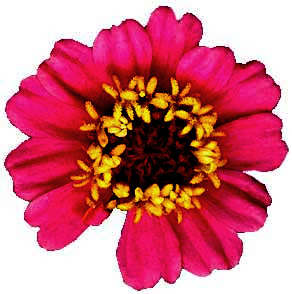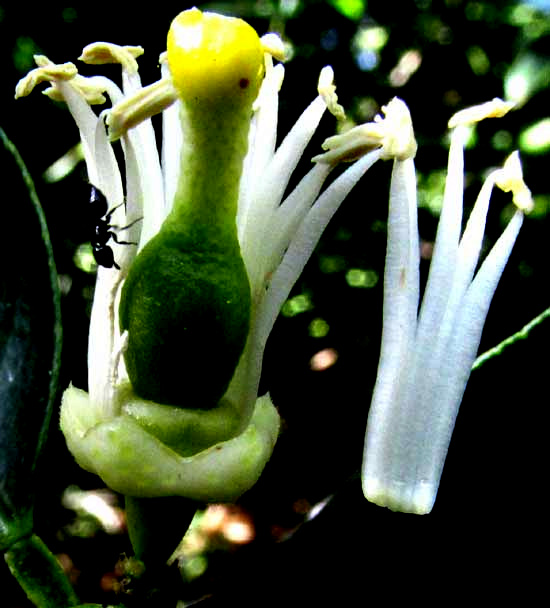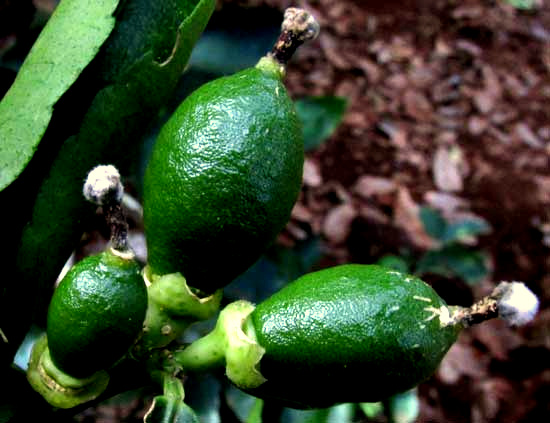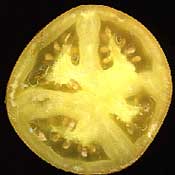

 Flowers -- also called blossoms and blooms -- are a flowering plant's reproductive structures in which the sexual union of sperm and egg take place. Sperm arrive in the flower via pollen, and the sexual union occurs in ovules inside the flower's ovary. After this sexual union, the flower's female part, the pistil, matures into a fruit containing seeds from which new plants may arise. At the right, that's a Lime-tree flower which has lost its petals, but retained several white,
Flowers -- also called blossoms and blooms -- are a flowering plant's reproductive structures in which the sexual union of sperm and egg take place. Sperm arrive in the flower via pollen, and the sexual union occurs in ovules inside the flower's ovary. After this sexual union, the flower's female part, the pistil, matures into a fruit containing seeds from which new plants may arise. At the right, that's a Lime-tree flower which has lost its petals, but retained several white,  matchstick-like, pollen-producing stamens and a pistil composed of a green, oval ovary atop which a pale style terminates with a yellow stigma. The green ovary with traces of the style and stigma will mature into a lime fruit. At the left, three lime flower pistils are on their way to becoming lime fruits.
matchstick-like, pollen-producing stamens and a pistil composed of a green, oval ovary atop which a pale style terminates with a yellow stigma. The green ovary with traces of the style and stigma will mature into a lime fruit. At the left, three lime flower pistils are on their way to becoming lime fruits.

Flowering plants technically are known as angiosperms. They differ from gymnosperms, which also produce seeds, in that from the moment of fertilization, the ovary's ovules, which mature into the fruit's seeds, remain completely enclosed within a kind of compartment, the "carpel." The carpel's tissue surrounding the developing embryo/ protects and nourishes the embryo. An ovary may produce only one carpel, or several.  The tomato slice at the right shows four carpels, each carpel with numerous seeds. Earlier, that tomato was a flower's pistil, and its seeds were ovules. At the left, the ovary of a tomato flower's pistil has been cut across, revealing three carpels with numerous ovules in each carpel.
The tomato slice at the right shows four carpels, each carpel with numerous seeds. Earlier, that tomato was a flower's pistil, and its seeds were ovules. At the left, the ovary of a tomato flower's pistil has been cut across, revealing three carpels with numerous ovules in each carpel.

When defining what a flower is, all this talk about ovules and carpels is necessary because gymnosperms produce seeds, but not flowers, as defined botanically. At the left you see the cone and three winged seeds -- and they're "real" seeds -- of a Loblolly Pine, Pinus taeda. Some people might say that a pine tree's dangling, yellow, pollen-shedding "catkins" are male flowers, but technically they're pollen cones, not flowers. This may seem like a lot of fuss about terms, but in a world in which fuzzy thinking about biology/ecology is endangering the planetary biosphere and Life on Earth, fuzzy thinking is not a good idea; Fussiness about details is.